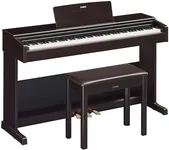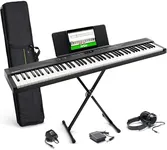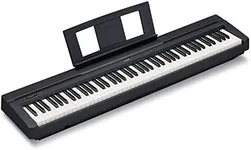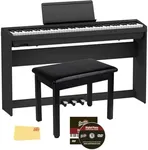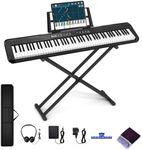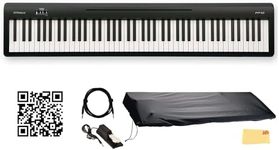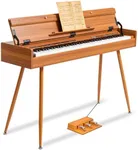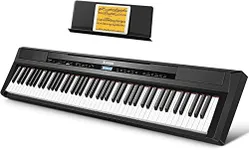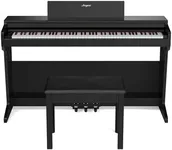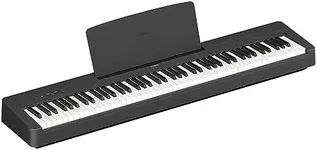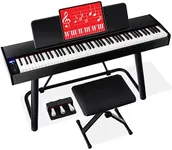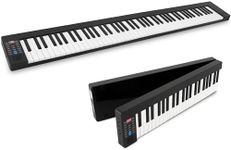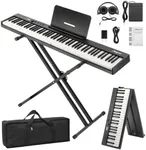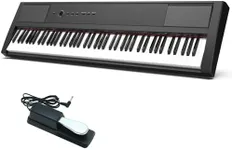Buying Guide for the Best Beginner Digital Pianos
Choosing the right beginner digital piano can be a rewarding experience if you know what to look for. A digital piano is a great way to start learning to play music, offering the convenience of portability, volume control, and various features that can aid in your learning process. When selecting a digital piano, it's important to consider several key specifications to ensure you get the best fit for your needs and preferences.Number of KeysThe number of keys on a digital piano is crucial because it affects the range of notes you can play. Most traditional pianos have 88 keys, which is the standard for classical and advanced pieces. For beginners, a digital piano with 61 or 76 keys can be sufficient, as it covers most of the notes needed for early learning. If you plan to advance your skills, opting for an 88-key model might be a better long-term investment.
Key ActionKey action refers to how the keys respond when pressed, which can significantly impact your playing experience. There are three main types: non-weighted, semi-weighted, and fully weighted keys. Non-weighted keys are lighter and easier to press, suitable for young children or those with limited finger strength. Semi-weighted keys offer a balance between ease of play and a more realistic feel. Fully weighted keys mimic the feel of an acoustic piano and are ideal for those who want to develop proper finger strength and technique.
Touch SensitivityTouch sensitivity means the keys respond to the force with which they are pressed, producing louder or softer sounds accordingly. This feature is important for expressive playing and developing dynamic control. Some digital pianos allow you to adjust the sensitivity to match your playing style. For beginners, having touch sensitivity can help in learning how to control the volume and expression of their playing, making it a valuable feature to look for.
Sound QualitySound quality is determined by the digital piano's sound engine and speakers. High-quality sound engines produce more realistic and rich tones, closely mimicking an acoustic piano. The speakers' quality also affects the overall sound experience. For beginners, it's important to choose a digital piano with clear and pleasant sound to make practice enjoyable. Listening to sound samples or trying out the piano in person can help you assess the sound quality.
PolyphonyPolyphony refers to the number of notes a digital piano can produce at once. Higher polyphony allows for more complex and sustained sounds without notes cutting off. For beginners, a polyphony of 64 notes is usually sufficient, but if you plan to play more complex pieces or use the sustain pedal frequently, opting for 128 notes or higher can be beneficial. This ensures that all notes are heard clearly, even during intricate passages.
PortabilityPortability is an important factor if you need to move your digital piano frequently or have limited space. Lighter and more compact models are easier to transport and store. However, more portable models might compromise on features like key action and sound quality. Consider how often you will need to move the piano and balance portability with the other features that are important to you.
Additional FeaturesAdditional features such as built-in metronomes, recording capabilities, and connectivity options (like USB or MIDI) can enhance your learning experience. Built-in lessons and apps can provide guided practice, while recording features allow you to track your progress. Connectivity options enable you to connect to other devices for expanded functionality. Think about which features will support your learning style and make practicing more engaging and effective.

